Kuranda
Butterfly Experiences
Discover Australian Butterfly Sanctuary, Australia's biggest butterfly flight aviary. Home to 1,200 tropical butterflies, the sanctuary is an all-weather experience in the heart of Kuranda.
Be enchanted by these elusive wonders of nature as you walk amid boardwalks and gardens, letting vibrant butterflies flutter around you. Join the breeding lab tour or download a free audio tour. Educational exhibits feature Silk Moth caterpillars, Hercules Moth, or Mini Beasts. Explore food plants on the new walk, witness the butterfly lifecycle from eggs to daily aviary release, and be amazed at butterflies from all over the globe in our museum displays.
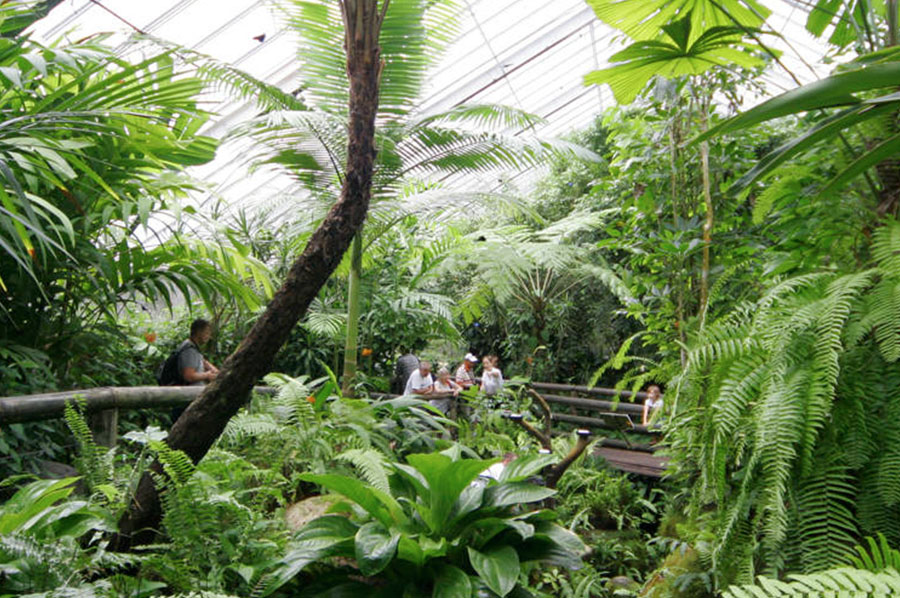
The main aviary replicates a natural rainforest environment, with special attention to the needs of our most nervous butterfly, the Ulysses. The landscaping within the aviary is often remarked upon, especially by keen gardeners. There is both a rainforest under-storey and canopy, as well as a running stream, complete with waterfalls, creating a natural looking and feeling rainforest setting. Butterflies are extremely fragile creatures, and the right conditions must be in place to ensure conditions are conducive to butterflies completing their complex courtship rituals.
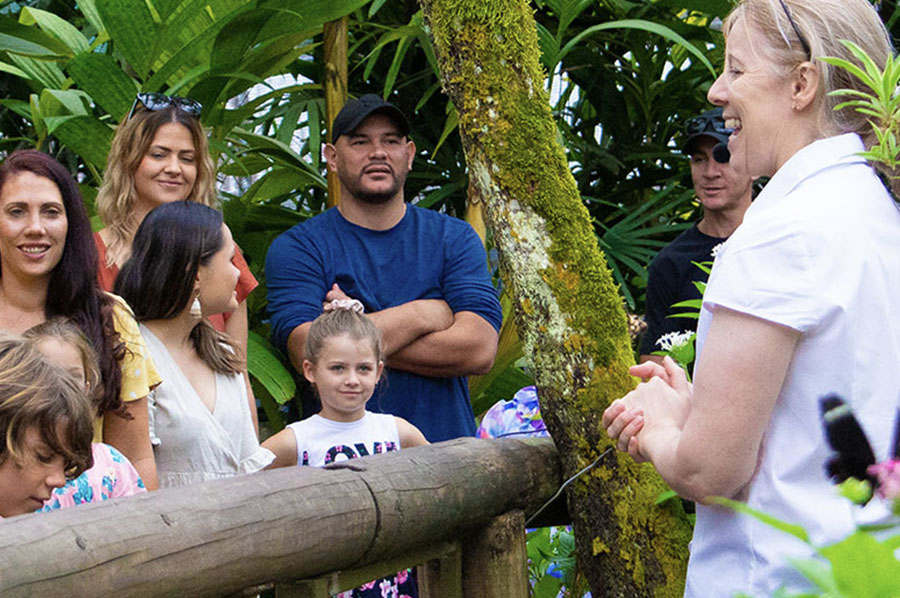
Our knowledgeable guides will take you through our rainforest aviary, detailing a butterfly’s life cycle and behaviour. Be sure to wear something bright (we recommend red or hot pink) and let these beautiful and colourful creatures flutter around you as you wander through! See colours through the eyes of a butterfly with our UV display. Free 30-minute guided tours through the flight aviary and laboratory are available during the day. Ask our friendly reception staff.

You can watch our new Cairns Birdwing emerging video to learn more about a butterfly’s lifecycle. We have a microscope connected to a computer which captures images so you can view the anatomy and wing structure of several butterfly species and observe the tiny scales that produce the iridescent electric blue of the Ulysses. The website background is in fact a butterfly wing as seen under the microscope. The Silk Moth Caterpillars exhibit has a live display during their summer breeding season and provides information and cocoons all year round. You’ll learn why silk is so expensive – these caterpillars produce around 600-900 metres of silk when they spin their cocoons. The moths don’t fly, so you’ll sometimes see them mating inside the display.
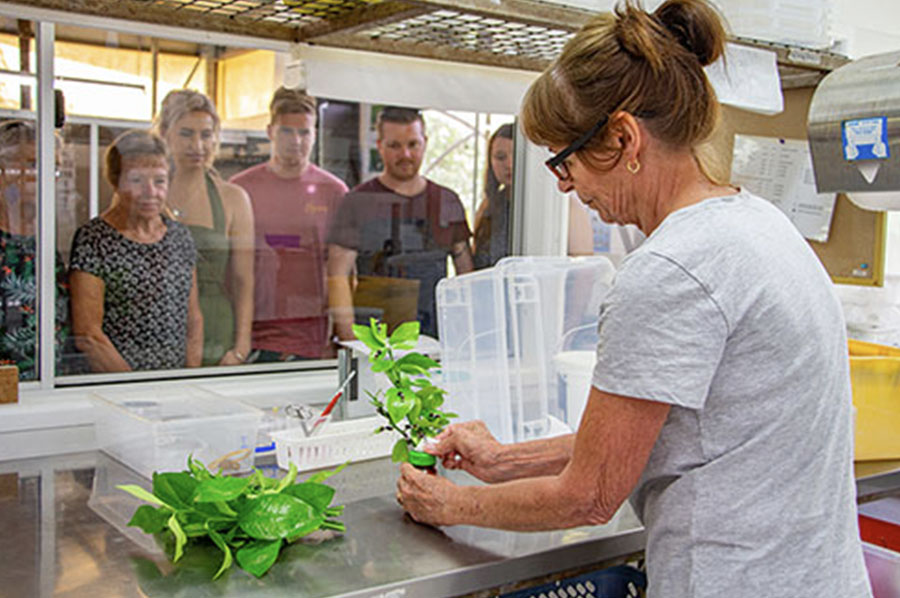
The laboratory is included in the 30 minute guided tour. The guided tour is available on request throughout the day from 10:00am to 3:15pm at no extra charge. This part of the tour provides an opportunity to view first-hand the breeding laboratory through special viewing windows. You will see the caterpillars in their varying stages of development and find out all sorts of interesting facts such as why it is that caterpillars need to change their skins five times during their time as caterpillar. Explanations are also given as to why it is so advantageous for these creatures to transform themselves from caterpillars to butterflies.

All of our butterflies are reared on the premises. To continuously stock the Australian Butterfly Sanctuary, the laboratory and guiding staff collect eggs daily and “hand-raise” the caterpillars right through to the chrysalis stage, until they are released as butterflies into the Sanctuary.

Butterflies are the subject of legends, myths and magical folklore in many cultures because they are one of nature’s most beautiful examples of metamorphis – transformation and growth. Visit our Butterfly Myths & Legends display and read some of our favourite legends that feature these magical and beautiful creatures.
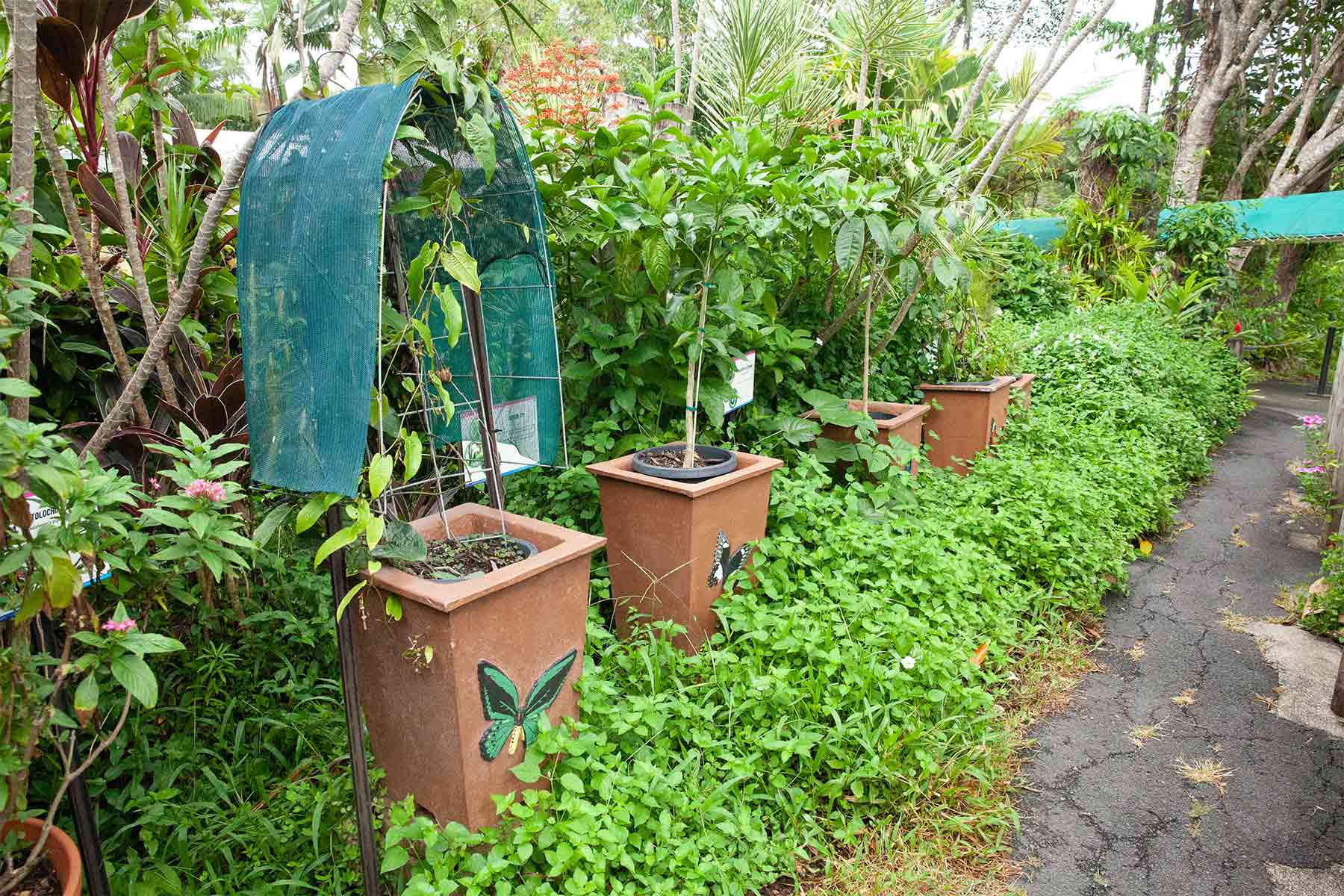
Ever wondered how on earth we manage to feed over 1,200 tropical butterflies a day? Pondered over what plant a Cairns Birdwing Butterfly eats or how much a Hercules Moth caterpillar consumes? Our food plant walk is here to provide answers to all your buzzing, fluttering questions…
The food plant walk at the Australian Butterfly Sanctuary is a twenty minute educational guided walk around our grounds displaying various caterpillar host food plants. All of these plants are grown on site and are used by our laboratory staff to feed our caterpillars.
Fun Fast Food Facts
- We produce around 20,000 butterfly pupa per year.
- We grow 25 species of food plant to breed around 20 species of local butterflies.
- Our Cairns Birdwing Caterpillars need 100 metres of vine per week!
- We have 3 acres of land to cultivate our food plants on site.
- 20 silkmoth caterpillars will eat one whole Mulberry plant!
- We collect around 50 to 100 litres of plant material daily
Food Plants To Discover
Aristolochia tagala – Cairns Birdwing
Melicope elleryana – Ulysses Butterfly
Citrus trees (lemon, lime grapefruit) – Orchard, Ambrax, Fuscus and Dainty Swallowtail Butterflies
Adenia heterophylla – Red Lacewing, Orange lacewing and Cruiser Butterflies
Asytasia gangetica – Common Eggfly, Blue Banded Eggfly butterflies
Mulberry trees – Silk moths
Bleeding Heart tree – Hercules moths
The Plant Walk is included in your admission! Ask our friendly staff for times when you visit! Book online now!
Please note: This guided walk has uneven paths and is unsuitable for prams, wheelchairs and walking aids. Flat enclosed shoes are recommended. Children must be supervised. Participants must follow the guide’s instructions at all times.
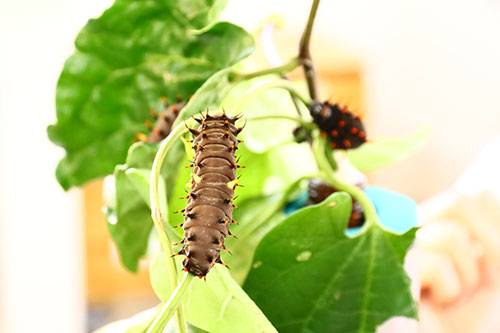
We have approximately 3 acres of land on site that we use to grow host food plants to feed our caterpillars.
We are also in the process of introducing some more ‘seasonal’ species, so we are planting more host plants to feed these hungry caterpillars as well.

The Fairy Garden is like walking into a miniature fairy tale! See small, dainty species of butterflies flutter amongst magical fairies, miniature scenes and amongst native and non native plant species.
The Fairy Garden is in a separate section to the rest of our aviary and was built to showcase smaller butterfly species. It is home to the Grass Yellow Butterfly and pupa may emerge at any time to take their first flight across this adorable fairytale wonderland.
To keep the lighting as natural as possible, this small aviary is covered by a very light shade cloth. This way, the butterflies can feed on natural flowers rather than nectar.
Entrance to the Fairy Garden is included in your entry fee.
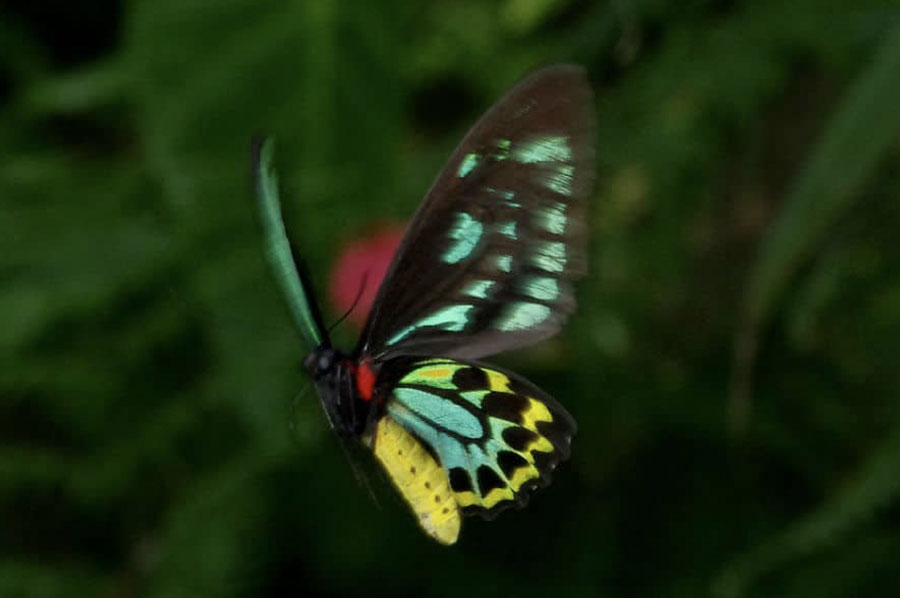
In the aviary there are two cage areas where you will see Ulysses, Cairns Birdwing and Orchard butterfly pupae. We hang the pupa in these cages and when the butterfly emerges it pumps up its wings. When its wings are hard and dry, we open the cage door and you can observe these butterflies taking their first flight.

Depending on the time of year, our silkmoth display includes silkmoth eggs, the caterpillars, the cocoons and the moths. During the months of September and May when the food plant (Mulberry tree) is growing well, we have the full breeding life cycle on display. We also have a lot of interesting facts about the silkmoth and its life cycle available in this area.

Butterflies can see in the ultra violet spectrum, so our UV Light Display gives you the opportunity to see what a butterfly can see, which includes colours in fluorescence. If you are wearing the right colours, such as bright white, you will glow in this display.
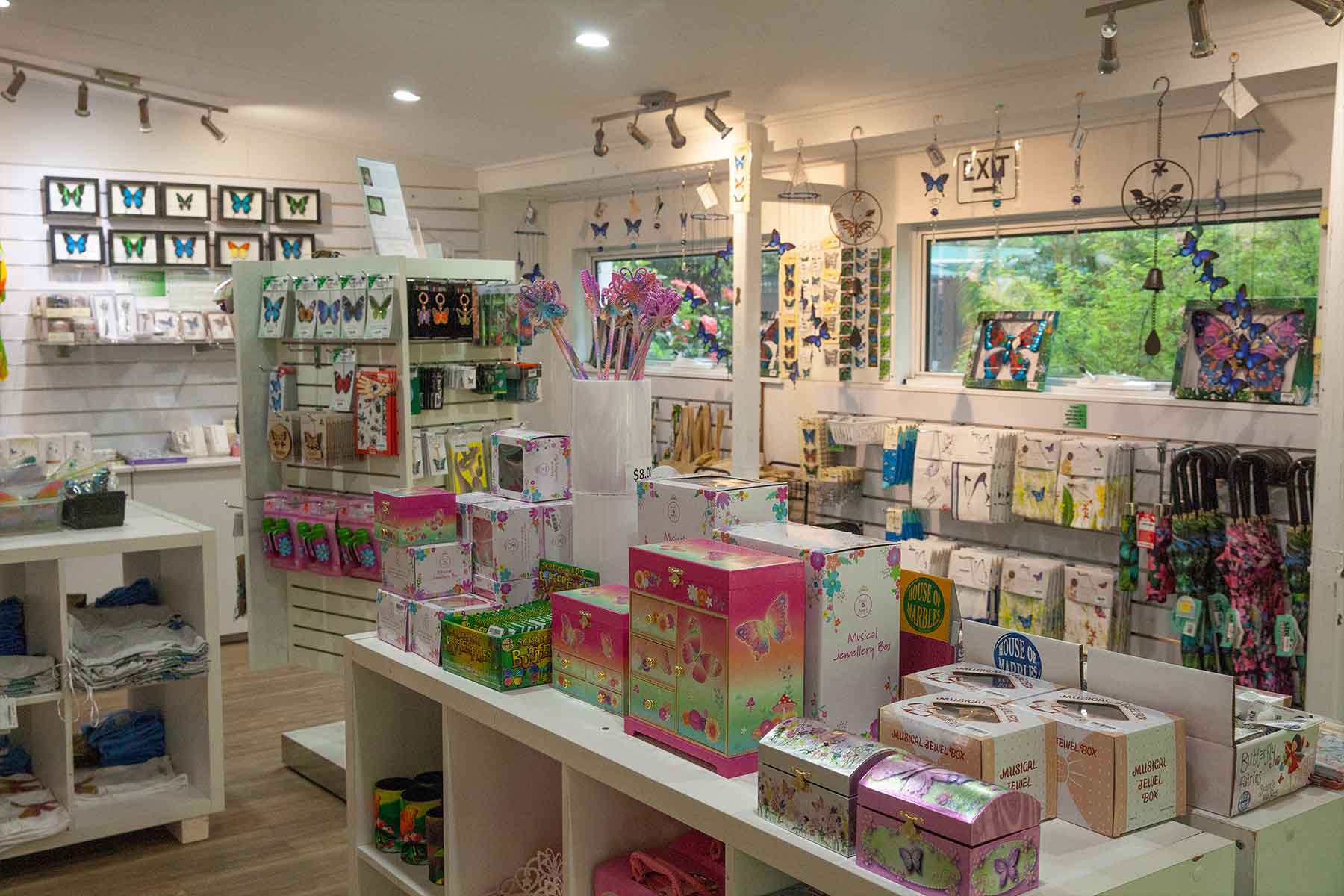
Our gift shop has everything for the butterfly lover from novelty and gift items, to post cards and educational books and posters, to t-shirts and jewellery. You’ll have no shortage of gift ideas for friends and family back home and souvenirs for you to remember your visit.
